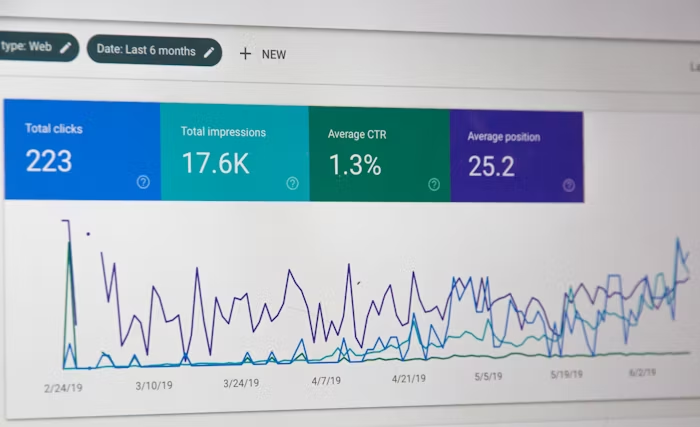
How to Build an Ecommerce Website: Step-by-step Guide ( Updated 2025)
For companies of all sizes, having an online presence is essential. The first step in starting or growing your online retail business is building an ecommerce website. As the global ecommerce market is projected to reach $6.9 trillion in 2025, accounting for over 23% of total retail sales, a well-structured ecommerce website continues to be a powerful investment that drives long-term growth.
This comprehensive guide will walk you through the process of developing an ecommerce website from scratch—ensuring your online store is not only functional but also aesthetically pleasing and user-friendly.
Step 1: Define Your Ecommerce Business Strategy
Before diving into the technical setup, establishing a clear business plan is essential. Start by answering:
- What products or services will you sell?
- What sets your business apart from competitors?
- Who is your target audience?
- What is your pricing strategy?
- What are your short-term and long-term goals?
Your business strategy is the compass that guides your ecommerce journey. These foundational goals will help you stay motivated and focused as you build and scale your online store.

Step 2: Choose a Domain Name and Hosting
Your domain name acts as your digital address, so make it memorable, brand-relevant, and easy to spell. It should reflect your brand name or hint at your niche.
When you're ready, consider registering your domain and setting up hosting with one of the following providers:
- Domain.com – Offers a wide range of domain extensions (TLDs), including country-specific options. Known for its reliability and competitive pricing.
- SiteGround – A high-performance hosting provider with stellar customer support. Great for WordPress sites.
- HostGator – Beginner-friendly, affordable, and offers shared, VPS, and dedicated hosting plans.
- A2 Hosting – Known for speed and efficiency, with SSD storage and turbocharged server setups.
- WP Engine – Tailored for WordPress users who prioritize security and speed.

Step 3: Select the Right Ecommerce Platform
Your ecommerce platform is the backbone of your online store. Choose one that aligns with your needs:
- Shopify – A beginner-friendly, all-in-one solution. Handles hosting, security, and payments with ease.
- WooCommerce – A flexible WordPress plugin ideal for users wanting control and customization.
- BigCommerce – Great for growing brands with advanced features like SEO tools and multi-channel selling.
- Squarespace – Offers elegant templates and drag-and-drop functionality, ideal for visual brands.
- Square Online – Perfect for brick-and-mortar businesses that want to expand online and integrate inventory management.

Step 4: Design Your Ecommerce Website
A well-designed website reflects your brand and enhances the shopping experience. Focus on:
- Visual Consistency – Align colors and fonts with your brand identity.
- User-Centric Layout – Make essential info—like product categories, policies, and contact details—easy to find.
- Product Showcase – Use high-resolution images, multiple angles, and zoom features.
- Mobile Optimization – Ensure your site works seamlessly across all devices.
- Intuitive Navigation – Categorize products logically to simplify browsing.
Always prioritize user experience—it should be effortless for visitors to find, explore, and purchase.

Step 5: Add Products and Content
Once the framework is in place, start populating your site with products and content:
- Product Pages – Write compelling descriptions that highlight features, benefits, and use cases. Include price, variants (e.g., size or color), and customer reviews.
- Blog Section – Build trust and authority by publishing articles such as buying guides, how-tos, and product spotlights. Not only does this inform your customers, but it also boosts SEO.

Step 6: Set Up Payment and Shipping Options
A secure, smooth checkout process is key. Choose a payment gateway that matches your platform and audience:
- Shopify Payments – Built-in and fully integrated with Shopify. Fast, easy, and streamlined.
- Stripe – Flexible and developer-friendly, supporting various currencies and payment methods including Apple Pay and Google Pay.
- PayPal – Still a favorite for many customers thanks to its familiarity and ease of use.
When setting up shipping, consider your target market's location. Be transparent about shipping costs and delivery timelines during checkout.

Step 7: Optimize for SEO
Search engine optimization remains critical in 2025. Start by:
- Conducting keyword research using tools like Moz, Ahrefs, or SEMrush to uncover terms your audience searches for.
- Incorporating those keywords into product titles, descriptions, meta tags, and alt text for images.
- Updating your site regularly with fresh content to improve visibility in search rankings.
Also, implement technical SEO practices such as clean URLs, fast loading speeds, and an XML sitemap.
→ Learn more in The Ultimate Guide to Ecommerce SEO in 2025

Step 8: Test and Launch
Before you go live, thoroughly test your website:
- Ensure all forms and checkout features work correctly.
- Fix broken links and optimize load times.
- Test across various browsers and devices to ensure a seamless experience.
Once you're confident everything is in place, announce your grand opening via social media, email marketing, and any existing audience channels.

Step 9: Market Your Ecommerce Website
A solid marketing plan drives traffic and conversions. Try combining:
- Social Media Marketing – Build profiles on platforms your audience uses. Share product highlights, behind-the-scenes content, and run targeted ads.
→ Master TikTok Ads with this essential guide
- Content Marketing – Publish valuable blog posts and videos that educate or entertain your target audience.
- Paid Advertising – Leverage PPC campaigns via Google Ads, Meta Ads, and TikTok Ads for immediate traffic.
- Email Marketing – Collect emails and send updates, offers, and personalized recommendations.
- Customer Retention – Use loyalty programs, thank-you emails, and post-purchase follow-ups to keep customers coming back.

Step 10: Monitor and Improve
An ecommerce website is never “done.” Use analytics tools like Google Analytics 4, or your platform's dashboard to monitor:
- Conversion rates
- Traffic sources
- Best-selling products
- Abandonment rates
Run A/B tests on product pages, CTAs, and marketing emails to fine-tune performance. Keep learning from your data and adapt to industry trends and customer feedback to stay ahead in the competitive ecommerce space.

Final Thoughts
Building an ecommerce website in 2025 is more accessible than ever—but success requires thoughtful planning, consistent effort, and a customer-first mindset. Your website represents your brand online, and how well it performs will directly impact your bottom line.
Don’t be discouraged by early challenges. Keep experimenting, stay flexible, and adapt as your business grows. With the right strategy and tools, your ecommerce venture can thrive in the ever-evolving digital marketplace.

